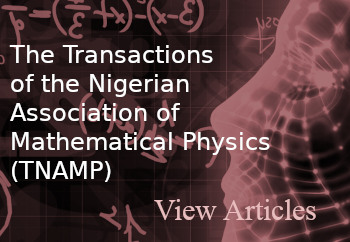MODELING THE RELATIONSHIP BETWEEN MONETARY POLICY AND ECONOMIC GROWTH IN NIGERIA: AN APPLICATION OF THE ARDL APPROACH IN THE PRESENCE OF STRUCTURAL BREAKS.
DOI:
https://doi.org/10.60787/jnamp-v66-323Keywords:
Monetary Policy, Economic Growth, Structural breakAbstract
The role of monetary policy in sustaining economic growth has been a highly researched subject. The aim of this study is to examine the relationship between monetary policy and economic growth when there is evidence of structural break. Quarterly time series data was collected from the Central Bank of Nigeria Statistical Bulletin and Website from 1981 to 2021. Motivated by the prevalence of misleading inference in time series occasioned by failure to account for structural breaks in series as volatile as macroeconomic variables in Nigerian specific studies, this study sought to find out whether structural breaks matter in studying the response of Economic growth due to monetary policy shocks. The study employed Zivot-Andrews unit root test with structural break to compare the unit root result with the conventional ADF result while the Autoregressive Distributed Lag (ARDL) bounds testing approach is used to investigate the co-integration among the variables in the presence of structural breaks. The unit root test shows that failure to account for structural break in unit root of a volatile series can produce wrong inference. After allowing for structural breaks, the study finds no evidence of co-integration relationship between economic growth and monetary policy. Thus it can be argued that there exists only a short run relationship between the variables of study. The estimates of the ARDL short run model suggest that Money Supply (M2) has a significant positive impact on economic growth in the short run at the selected lag length. However, the estimates show that Net Credit to Government (NCG) has a negative significant impact on economic growth in Nigeria. More also, Exchange Rate (EXR), Inflation (INFL) and Maximum Lending Rate (MLRC) have a positive but insignificant effect on Economic Growth in the short run. This study reveals that broad money supply lead to economic growth in the short run. Structural change is persistent in macroeconomic time series data, and it can be quite hazardous to ignore as inferences about economic relationships can go off track and policy recommendations can be deceptive or worse, therefore Researchers working with macroeconomic time series data are recommended not to use only unit root tests such as ADF, DF-GLS, and PP that do not account for structural breaks, but unit root tests that account for structural change, such as the Zivot Andrews test, the Chow test, and the Bai Perron multiple structural break test, should also be employed.
Downloads
References
CBN (2011). “What is Monetary Policy?” Understanding Monetary Series No. 1.
Jinghan, M.L. (2004). Acroeconomic Theory, 10th Revised & Enlarged Edition (Vrinda Publications (P) Ltd,), p. 99.
Okafor, P. N. (2009). “Monetary Policy Framework in Nigeria: Issues and Challenges,” CBN Economic and Financial Review, 33(2).
Henry, E.A and Sabo, A.M.(2020).Impact of monetary policy on inflation rate in Nigeria: Vector Autoregressive Analysis, Bullion. 44(4),6. https://dc.cbn.gov.ng/bullion/vol44/iss4/6 13.
Kayode O. B, Israel O. U.and Onyuka F. M.(2020). The impacts of monetary policies on savings and investment in developing economies: A case study. halid: hal-02520027 https://hal.archivesouvertes.fr/hal-02520027 Preprint submitted on 26 Mar 2020 15.
Abiodun S. O. and Ogun, T.P.(2019). Asymmetric effect of monetary policy shocks on output and prices in Nigeria. African Journal of Economic Review,7(1), 238-248.
Ajibola, A and Oluwole, A. (2018). Impact of monetary policy on economic growth in Nigeria. Open access library journal, 5( e4320): ISSN print: 2333-9705, ISSN online: 2333-9721.
Okoro, A. S. (2018). Impact of Monetary Policy on Nigeria Economic Growth. Prime Journal of Social Sciences. 2 (2), 195-199.
Osondu , A.N, and Adiele, D.F (2021), “Evaluating the impact of some macroeconomic determinants on economic growth in Nigeria using the autoregressive distributed lag (ARDL) model. COOU journal of physical sciences, 4(1), 191-201.
Chipote, P and Makhetha-Kosi, P.(2014). Impact of monetary policy on economic growth: A case study of South Africa. Mediterranean journal of social sciences, MCSER publishing, Rome-Italy. 5(15):76-84. ISSN 2039-9340(Print) ISSN 2039-2117(Online)
Micheal, B. and Ebibai,T.S.(2014). Monetary policy and economic growth in Nigeria (1980-2011). Asia Economic and Financial Review, Vol.4(1). Pp.20-32
Zivot, E. and Andrews, K. (1992). Further evidence on the great crash, the oil price shock, and the unit root hypothesis. Journal of Business and Economic Statistics, 10 (10), 251- 270.
Perron, P. (1989) Trend, unit root and structural change in macroeconomic time series. In Cointegration for the Applied Economist, Rao, B.B. (ed) MacMilian Press: Basingstoke, pp. 113-146
Downloads
Published
Issue
Section
License
Copyright (c) 2024 The Journals of the Nigerian Association of Mathematical Physics

This work is licensed under a Creative Commons Attribution-NonCommercial-ShareAlike 4.0 International License.




